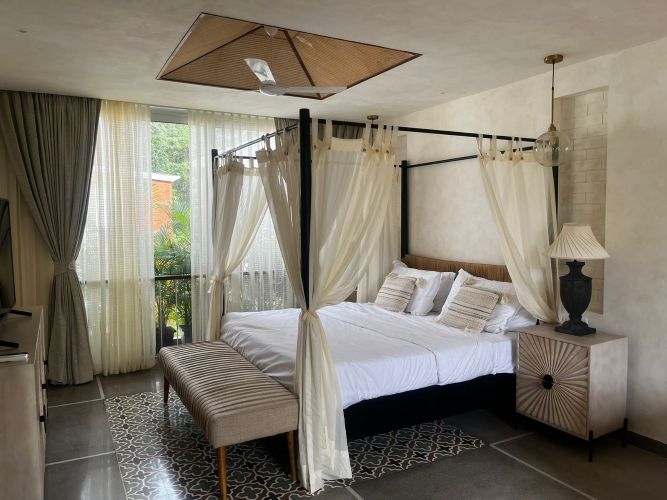Waste-Free Design: Upcycling and Circular Economy in Interiors

Having large windows helps reduce usage of electricity
Chhaya Sharma
Sustainability has always been a priority in design and construction. Today, many interior designers are opting for eco-conscious construction and waste-free design strategies. From upcycling elements to following the ideas of circular economy, a waste-free design can be implemented. In the context of interior design, circular economy is embraced by creating interior spaces using eco-friendly materials that can be recycled, repurposed, or disposed of in an environmentally responsible manner. This Earth Day (April 22), we aim to explore homes that are crafted with the idea of waste-free design and solutions. In this article, delves into the concept of waste-free design, following the idea of upcycling and recycling in design.
Opting for Convertible Furniture
Nowadays, there is a noticeable trend in offices when businesses choose to recycle furniture and obtain old materials. This method suggests that intricate designs can be accomplished with as much flair and functionality as needed without placing an excessive amount of strain on the planet’s ability to absorb resources, which is in line with what the majority of people desire in interior design and sustainability.
Zero-Waste Homes
Utilising recycled resources in building constructions, such as reclaimed wood, and optimising interior design to reduce waste are certain ideas that the circular economy is operationalised in residential architecture. Durability, sustainability, and environmental friendliness are all included in the design of these residences without sacrificing aesthetic appeal. Opting for elements like multi-functional furniture or creating decor pieces from leftover materials leads to zero-waste homes.
Prioritising Low-Waste and Timeless Homes
Choose premium materials that will last longer and need fewer replacements. For sustainability and character, using natural stone and recycled wood can serve as an eco-conscious choice. Choosing environmentally friendly flooring options like bamboo and engineered hardwood. Opting for long-lasting and recyclable metals such as brass, stainless steel, and aluminum can lead to a timeless design while prioritising sustainability.
Going Local and Non-Toxic for A Circular Economy
To add to the process of circular economy, going local is the best option. Select locally available stone and produced tiles to cut down on transportation-related emissions. Invest in locally made custom furniture to reduce waste from mass production. For a sophisticated and morally sound decor, use sustainable fibers and handwoven fabrics. Moreover, certain handicrafts and ceramic decors pieces add character and depth to the space.
Additionally, for improved indoor air quality, choose water-based paints that don’t contain volatile organic compounds. Toxins can be avoided by using natural wood treatments like shellac, beeswax, and linseed oil. Use environmentally friendly adhesives and sealants to increase durability without using dangerous chemicals.
Good and sustainable interiors can be created when design integrates the concepts of the circular economy. Sustainable interior design materials and improved durability, flexibility, and resource efficiency can all have a big impact on a design’s environmental performance.
Chhaya Sharma is Principal Designer at Design ArTEC

